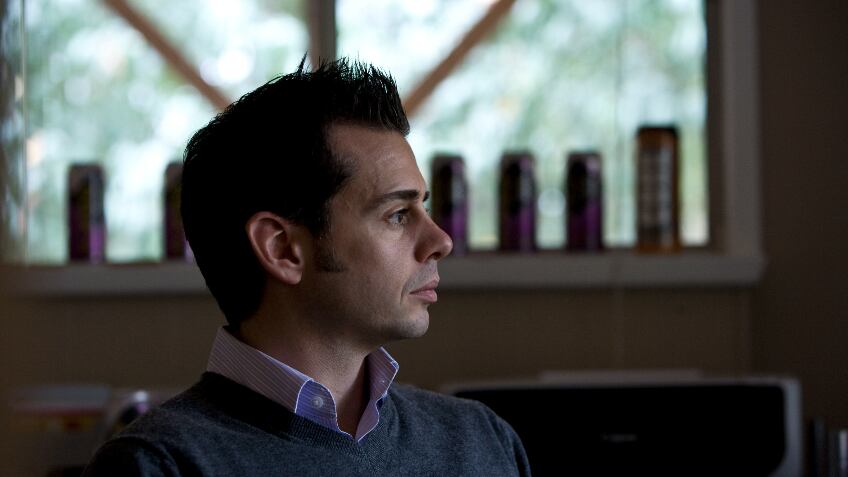From the archives: In 2010 the federal Food and Drug Administration issued a warning letter to Charge Beverages and three other companies, declaring seven caffeinated malt liquors a “public health concern.” Among the feds’ targets was the suddenly infamous Four Loko, along with Charge Beverages’ three caffeinated flavors: Core High Gravity HG, Core High Gravity HG Orange, and Lemon Lime Core Spiked. Here’s a brief look back on a man and his dream for a canned malt liquor that would get people caffeinated and drunk at the same time.
Six years ago, Tim Baggs was just a young man with a big dream—a dream for a canned malt liquor that would get people caffeinated and drunk at the same time.
“I was in the energy drink business,” says Baggs, a 35-year-old Gladstone native who founded Charge Beverages in Portland in 2004. “We were crushing a lot of energy drinks with vodka. I thought it’d be really cool to mix one and have an energy alcohol drink in a can. And that’s how it all began.”
Last week, it all ended.
The federal Food and Drug Administration issued a warning letter to Charge Beverages and three other companies, declaring seven caffeinated malt liquors a “public health concern.” Among the feds’ targets was the suddenly infamous Four Loko, along with Charge Beverages’ three caffeinated flavors: Core High Gravity HG, Core High Gravity HG Orange, and Lemon Lime Core Spiked.
Closer to home, the Oregon Liquor Control Commission held a special session Saturday, Nov. 20, to ban the seven drinks immediately in the state.
But Baggs had started pulling out of the alcoholic energy drink business nearly a year ago: Sensing what Baggs calls the “writing on the wall,” Charge Beverages started a new line of flavored malt liquors (with names like Core Spiked Triple Berry) with 12 percent alcohol by volume, but no caffeine.
“It’s a little bit of a bummer,” Baggs said last week. “I’d be lying if I said it wasn’t. But everything transitions…beer’s good, and beer’s awesome. But if you don’t want to have a beer, you can have a Strawberry Lemonade or a Triple Berry flavored malt beverage.”
For now, anyway. OLCC members say they may target those drinks next.
“Sweetened 12 percent alcohol, even without the energy supplements, I think is a dangerous product,” says OLCC chairman Phil Lang. “It’s about the equivalent of drinking five or six beers, or a bottle of wine, and they’re doing it in 15 [or] 20 minutes.” (The actual amount of alcohol in a can of Core High Gravity HG Orange is 2.64 ounces—equal to slightly more than four 12-ounce cans of Pabst Blue Ribbon.)
Before last weekend’s OLCC meeting, Lang had met Nov. 18 with the three largest distributors of alcoholic energy drinks. His request? Stop shipping any more of the candy-flavored canned drinks into Oregon.
They agreed. But the OLCC went further on Saturday, voting 4-1 to make it illegal for Oregon stores to sell any cans they still have on the shelves.
Board member Bob Rice warned they were making a mistake.
“If we do this today, there will immediately be a black market on this product,” he said.
Judy Cushing of the teen substance-abuse nonprofit Oregon Partnership urged the ban.
“Oregon has a problem. We need to get the alcoholic energy drinks off the shelves immediately,” she said. “These are marketed to teen drinkers.”
Baggs bristles at those charges.
“They’re saying that the color of our beverages—which matches the flavor—is marketing to minors,” he says. “What color should grape be on a can? What color should orange be? How would you like me to tell people it’s orange? To think that people are actually accusing us of marketing to underage people is ridiculous.”
Charge Beverages—which is headquartered in Northwest Portland on St. Helens Road but brews its drinks in La Crosse, Wisc.—is waiting to hear from the FDA what will happen to the rest of its caffeinated product nationally.
“I’m a small little $3 million trying-to-live-the-American-dream company, and I don’t want to get on these guys’ radar as somebody trying to fight the system,” Baggs said Monday. “There’s really nothing we can do at this point. The government has obviously told us that we’re not in control.”
